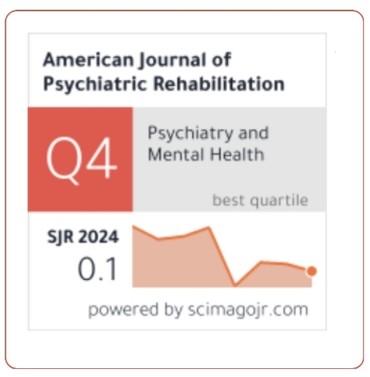Mapping Associations Between Smartphone Addiction and Physical Psychosocial Outcomes in Young Adults: A Review
DOI:
https://doi.org/10.69980/ajpr.v28i5.704Keywords:
smartphone addiction, young adults, musculoskeletal health, psychosocial outcomes, digital dependency, public healthAbstract
Smartphones have become indispensable tools in modern life, particularly among young adults who rely on them for communication, education, and entertainment. However, rising patterns of excessive and uncontrolled use often described as smartphone addiction are increasingly linked to a wide spectrum of adverse physical and psychosocial outcomes. This review aims to synthesize current evidence on the associations between smartphone addiction and health consequences in young adults, with emphasis on physical, psychosocial, and interconnected outcomes, while identifying research gaps and future directions. Evidence indicates that smartphone addiction is consistently associated with musculoskeletal strain, forward head posture, reduced neck muscle endurance, repetitive strain injuries, and sleep disruption. Psychosocial consequences include heightened anxiety, depressive symptoms, low self-esteem, fear of missing out (FoMO), and poorer academic performance. Notably, these outcomes interact bidirectionally: for example, sleep disturbance exacerbates musculoskeletal pain and psychological distress, while chronic discomfort increases vulnerability to stress and low mood. Cross-cultural research reveals varying prevalence and risk factors, with up to one-third of young adults in India exhibiting problematic smartphone use. Despite growing evidence, research is limited by inconsistent diagnostic criteria, heavy reliance on cross-sectional designs, and lack of longitudinal or mechanistic studies. In conclusion smartphone addiction in young adults represents a multidimensional health concern with interlinked physical and psychosocial effects. Addressing current gaps requires standardized diagnostic frameworks, longitudinal and interventional studies, integration of objective measures, and greater representation of diverse populations. Future directions should focus on developing preventive and therapeutic interventions, including digital literacy programs, ergonomic training, and psychosocial support. A multidisciplinary approach engaging healthcare providers, educators, policymakers, and technology developers will be critical to mitigating risks and promoting healthier digital habits among young adults.References
1. Abdizoitovich G. Educational Problems In The Information Society. Emergent: Journal of Educational Discoveries and Lifelong Learning (EJEDL). 2025 May 9;6(4):5-.
2. Ambat JK. Excessive use of digital devices: a qualitative study on perceived causes and impact (Doctoral dissertation, Bournemouth University).
3. Nambirajan MK, Vidusha K, Kailasam JG, Kannan S, Govindan D, Ganesh K, et al. Association between smartphone addiction and sedentary behaviour amongst children, adolescents and young adults: A systematic review and meta-analysis. J Psychiatr Res. 2025 Apr;184:128-39. doi:10.1016/j.jpsychires.2025.02.049
4. Aker, S., Şahin, M. K., Sezgin, S., & Oğuz, G. (2017). Psychosocial factors affecting smartphone addiction in university students. Journal of addictions nursing, 28(4), 215-219.
5. Zhong, Y., Ma, H., Liang, Y. F., Liao, C. J., Zhang, C. C., & Jiang, W. J. (2022). Prevalence of smartphone addiction among Asian medical students: A meta-analysis of multinational observational studies. International Journal of Social Psychiatry, 68(6), 1171-1183.
6. Pauline I, Daniel T, Nabawanuka B, Herbert M, Edson K. Personality Traits and Smartphone Addiction: An Evolving Addictive Trend. InSmartphone Addiction, Phone Snubbing, and Effects on Interpersonal Relationships and Mental Health 2025 (pp. 265-302). IGI Global Scientific Publishing.
7. Zhang S, Li S. How short video addiction affects risk decision-making behavior in college students based on fNIRS technology. Front Hum Neurosci. 2025 Apr 7;19:1542271. doi:10.3389/fnhum.2025.1542271.
8. Kumban W, Cetthakrikul S, Santiworakul A. Smartphone Addiction, Screen Time, and Physical Activity of Different Academic Majors and Study Levels in University Students. Int J Environ Res Public Health. 2025;22(2):237. doi:10.3390/ijerph22020237
9. Arooj I, Munir I, Yasmeen H. Physical and mental implications of mobile phone addiction [Implications physiques et mentales de la dépendance au téléphone mobile]. Ann Med Psychol (Paris). 2025 Apr;183(4):394-9. doi:10.1016/j.amp.2022.09.002.
10. Qin X, Liu L, Yan Y, Guo X, Yang N, Li L. Smartphone addiction and sleep quality in the physical activity-anxiety link: a mediation-moderation model. Front Public Health. 2025 Apr 3;13:1512812. doi:10.3389/fpubh.2025.1512812.
11. Alghadir AH, Gabr SA, Rizk AA, Alghadir T, Alghadir F, Iqbal A. Smartphone addiction and musculoskeletal associated disorders in university students: biomechanical measures and questionnaire survey analysis. Eur J Med Res. 2025 Apr 15;30:274. doi:10.1186/s40001-025-02274-4.
12. George SA, Rajashekhar S, Abraham AT. A case study on text neck syndrome and gamers’ thumb in a 10-year-old nomophobic student with attention deficit hyperactivity disorder (ADHD). Int J Sci Healthc Res. 2022;7(2):354–357. doi:10.52403/ijshr.20220449.
13. Mustafaoglu R, Yasaci Z, Zirek E, Griffiths MD, Ozdincler AR. The relationship between smartphone addiction and musculoskeletal pain prevalence among young population: a cross-sectional study. Korean J Pain. 2021 Jan 1;34(1):72-81. doi: 10.3344/kjp.2021.34.1.72. PMID: 33380570; PMCID: PMC7783853.
14. Elvan, A., Cevik, S., Vatansever, K. et al. The association between mobile phone usage duration, neck muscle endurance, and neck pain among university students. Sci Rep 14, 20116 (2024). https://doi.org/10.1038/s41598-024-71153-4
15. Acet N, Beğen S, Esmer M. Does smartphone addiction affect cervical mobility, head posture, body awareness and pain pressure threshold? Journal of Health Sciences and Medicine. 2025;8(1):57–62. doi:10.32322/jhsm.1557372
16. Yaşarer Ö, Mete E, Kaygusuz Benli R, Kılıç BB, Doğan H, Sarı Z. Association between smartphone addiction and myofascial trigger points. BMC Musculoskelet Disord. 2024;25(1):254. doi:10.1186/s12891-024-07383-4
17. Ahmed S, Mishra A, Akter R, Shah MH, Sadia AA. Smartphone addiction and its impact on musculoskeletal pain in neck, shoulder, elbow, and hand among college-going students: a cross-sectional study. Bull Fac Phys Ther. 2022 Feb 9;27:5. doi:10.1186/s43161-021-00058-0.
18. Alwazzeh M, Harfouch M, Hasan MA, Alqatari S, AlSaid AH, Alwazzeh MJ. Clinical manifestations’ spectrum of smartphone addiction: moving from an addiction toward a clinical syndrome. Clin Pract Epidemiol Ment Health. 2024 Jun 7;20:e17450179295575. doi:10.2174/0117450179295575240520064919.
19. Yang LL, Guo C, Li GY, Gan KP, Luo JH. Mobile phone addiction and mental health: the roles of sleep quality and perceived social support. Front Psychol. 2023 Sep 22;14:1265400. doi:10.3389/fpsyg.2023.1265400.
20. Tufan C, Köksal K, Griffiths MD, Erturgut R, Mert İS. Effects of fear of missing out, smartphone addiction, phubbing, and being phubbed on friendship satisfaction. Behav Inf Technol. 2024;44(14):3592-608. doi:10.1080/0144929X.2024.2434893.
21. Ni N, Ahrari S, Zaremohzzabieh Z, Zarean M, Roslan S. A meta-analytic study of partner phubbing and its antecedents and consequences. Frontiers in Psychology. 2025 May 13;16:1561159.
22. Mendonça I, Coelho F, Rando B, Abreu AM. A comparative study of short-term social media use with face-to-face interaction in adolescence. Children (Basel). 2025;12(4):460. doi:10.3390/ children12040460
23. Afzali FM, Rastegari E, Ning W. Students and smartphone usage: influencing factors. In: Proceedings of the 2025 ACM Southeast Conference. New York (NY): Association for Computing Machinery; 2025. p. 155-62. doi:10.1145/3696673.3723072.
24. Lee MS, Potenza MN, Bhang SY. Applying the Interaction of Person-Affect-Cognition-Execution Model to Addictive Behaviors in East Asian Countries: Feasibility and Considerations. J Korean Acad Child Adolesc Psychiatry. 2025 Jul 1;36(3):144-51. doi:10.5765/jkacap.250018. PMID: 40631654; PMCID: PMC12223675.
25. Felix G, Sharma MK, Anand N, Bhaskarapillai B, Srivastava K. Psychometric evaluation of smartphone addiction scale – short version (SAS-SV) among young adults of India. Ind Psychiatry J. 2025;34(1):53-60. doi:10.4103/ipj.ipj_336_24.
26. Khan, N. F., & Khan, M. N. (2022). A bibliometric analysis of peer-reviewed literature on smartphone addiction and future research agenda. Asia-Pacific Journal of Business Administration, 14(2), 199-222.
Downloads
Published
Issue
Section
License
Copyright (c) 2025 American Journal of Psychiatric Rehabilitation

This work is licensed under a Creative Commons Attribution 4.0 International License.
This is an Open Access article distributed under the terms of the Creative Commons Attribution 4.0 International License permitting all use, distribution, and reproduction in any medium, provided the work is properly cited.









